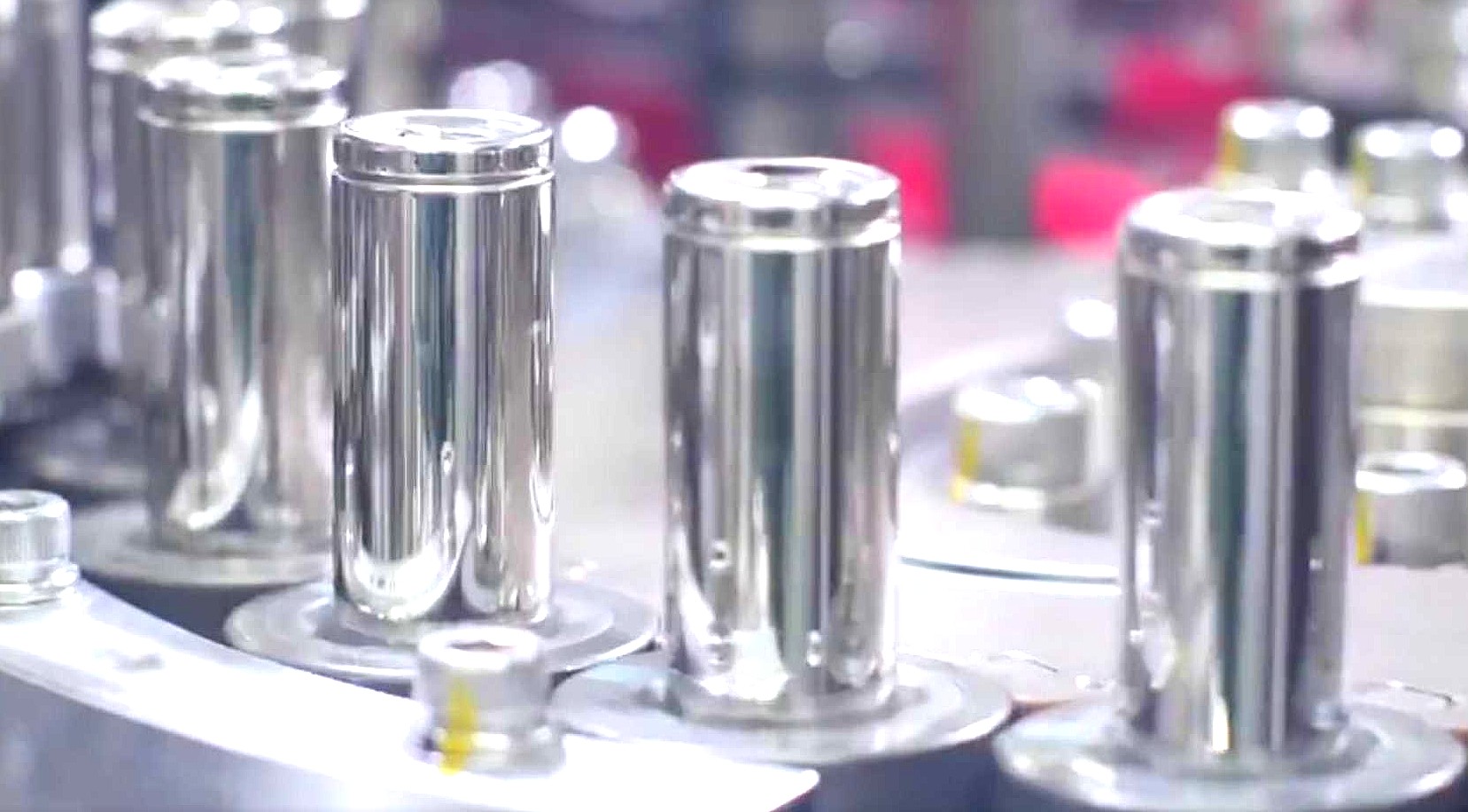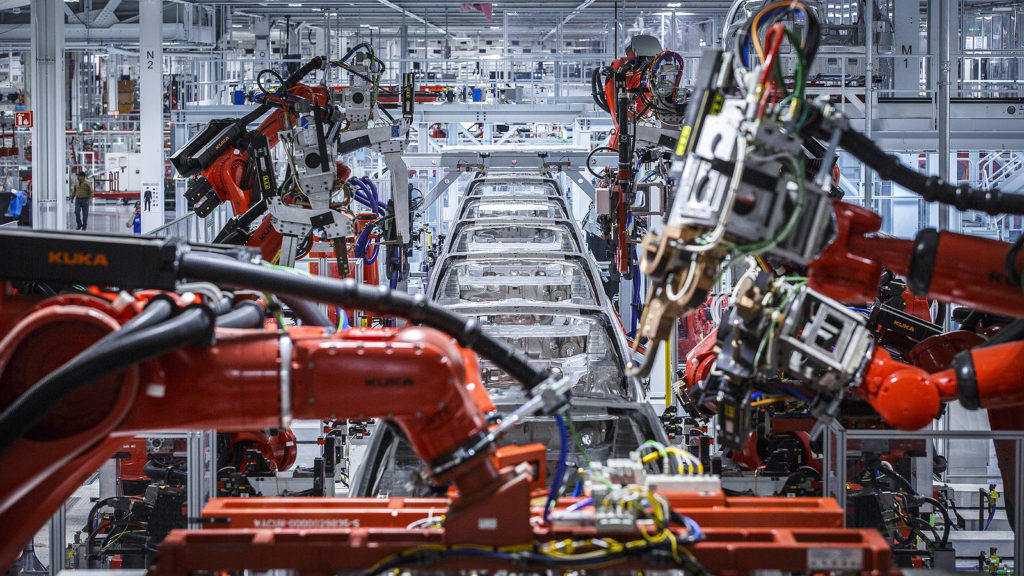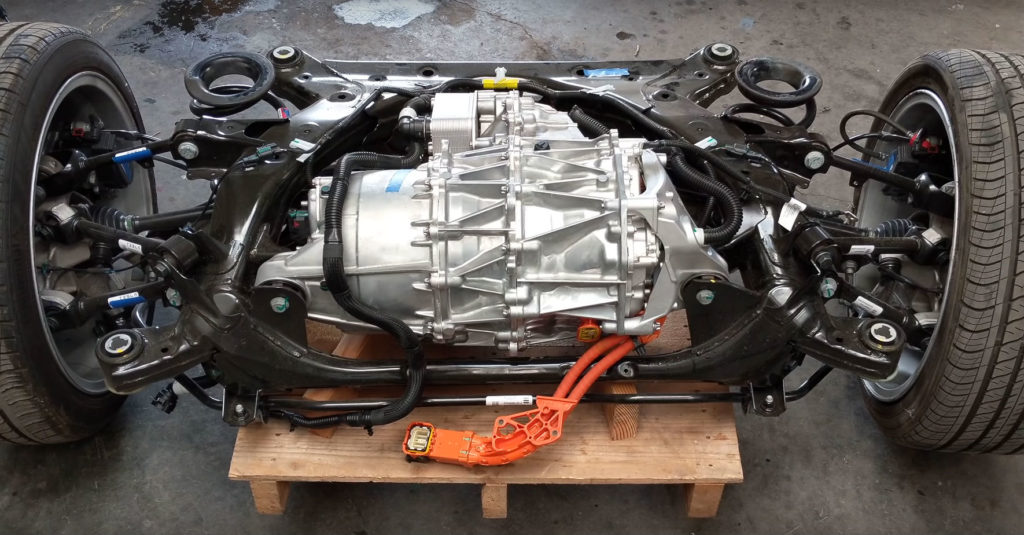

Investor's Corner
Auto experts reveal why Tesla’s batteries hold a comfortable lead in range
One of the reasons why the narrative of the “Tesla Killer” has effectively died is due to the pervading lead that Tesla holds over the competition in terms of range. Amidst the long-predicted entrance of competing vehicles from established automakers including Audi, Jaguar, and Porsche, Tesla’s vehicles have proven to be vastly superior in range, as evidenced by the Model S Long Range, which can last 370 miles in between charges.
Take Tesla’s very first car, the original Tesla Roadster. The vehicle featured Tesla’s efforts at creating a desirable all-electric sports car, and it showed in the Roadster’s robust 245-mile range. There weren’t even Superchargers when the Roadster was released, but the car proved that EVs could comfortably go beyond the 200-mile mark, and then some more. Interestingly, even modern EVs from veteran carmakers are finding it hard to match the Roadster’s 245-mile EPA range. The Audi e-tron, for example, just has 204 miles of range per charge, while the award-winning I-PACE has an EPA rating of 234 miles per charge.
This, according to veteran auto experts Sandy Munro and Mark Ellis of Munro & Associates, has a lot to do with Tesla’s all-electric platform and the company’s proprietary battery tech. Tesla is only 16 years old, and thus, it only has a fraction of the experience that its rivals in the auto market has. Yet in the EV segment, Tesla is among the veterans, having worked solely on electric cars since Day One.

All-Electric
As such, vehicles that Tesla releases such as the Model S, Model X, and Model 3, are designed as EVs from the get-go. In contrast, carmakers such as Mercedes-Benz and Audi opted to convert existing platforms for EV production. This reduces costs, but it is a double-edged strategy in the EV segment, which is starting to gain serious ground in several key markets. “If you’re designing something radically different, or if you want to have something that’s going to be a world-beater in the marketplace, that parts bin is the worst thing imaginable,” Munro said.
This could be seen in the difference between the Porsche Taycan and a vehicle such as the Mercedes-Benz EQC. Porsche opted to design the Taycan from a clean sheet, and the result was an all-electric sports car that can attack the track just as aggressively as the next 911. It even has a frunk like a Tesla, albeit smaller. Mercedes, on the other hand, opted to base the EQC on its existing GLC platform, and the result is an EV that still has echoes of its internal combustion roots. Between the two vehicles, it is easy to see which carmaker put more effort, and it shows. Today, it appears that the non-Tesla EV community is far more excited about the Taycan than they are for the EQC.
Mark Ellis, a senior master of lean design and battery consultant, notes that this is a key advantage that is inherent in Tesla. “One of Elon Musk’s big advantages is, basically, that the vehicle is designed to be an electric car. Musk designed every aspect of this car to be as efficient as possible,” he said.

The Secret Sauce
Apart from their all-electric design, Tesla’s secret sauce for its vehicles lies in their batteries, from the design of the pack to the chemistry of the cells themselves. Comparing the Model 3’s battery pack to those found in other EVs such as the Chevrolet Bolt EV, Nissan Leaf, Jaguar I-PACE, and BMW i3, Ellis stated that Tesla’s battery pack is superior, especially with regards to the placement of battery cells in relation to the current collectors. “It’s the best design of any battery pack I’ve seen so far,” he said.
But this is not all. Ellis added that Tesla’s cylindrical cells have inherent advantages compared to the prismatic or pouch cells used by the competition. Prismatic cells, for one, expand and contract as they charge and discharge, which means that manufacturers using them have to design their battery packs with the necessary parts to handle the expansion and contraction process of the cells. These add unnecessary weight to a battery, which Tesla’s packs don’t have to deal with.
Ultimately, Ellis explained that Tesla’s battery cells simply have a higher energy density than those utilized by its competition. Tesla was able to achieve this because its batteries have superior chemistry, the consultant said. Part of the reason behind this is the fact that Tesla as a company does not really stop innovating. Tesla’s Automotive President Jerome Guillen hinted at this in a previous interview, when he said that the company’s batteries are never frozen since they are always in a state of improvement. “We are improving the design of the cell. The design of the cell is not frozen. It evolves, and we have a nice roadmap of technology improvements for the coming years,” Guillen said.
Range is something that is one of the most important factors consumers consider when purchasing an electric car. With the number of EV charging stations not yet on par with the number of gas stations on the road, it is pertinent for customers for many car buyers to acquire a vehicle that can go the distance. Tesla’s long-range vehicles, together with the company’s Supercharger Network, are a perfect fit for these types of customers.

Investor's Corner
Tesla price target boost from its biggest bear is 95% below its current level

Tesla stock (NASDAQ: TSLA) just got a price target boost from its biggest bear, Gordon Johnson of GLJ Research, who raised his expected trading level to one that is 95 percent lower than its current trading level.
Johnson pushed his Tesla price target from $19.05 to $25.28 on Wednesday, while maintaining the ‘Sell’ rating that has been present on the stock for a long time. GLJ has largely been recognized as the biggest skeptic of Elon Musk’s company, being particularly critical of the automotive side of things.
Tesla has routinely been called out by Johnson for negative delivery growth, what he calls “weakening demand,” and price cuts that have occurred in past years, all pointing to them as desperate measures to sell its cars.
Johnson has also said that Tesla is extremely overvalued and is too reliant on regulatory credits for profitability. Other analysts on the bullish side recognize Tesla as a company that is bigger than just its automotive side.
Many believe it is a leader in autonomous driving, like Dan Ives of Wedbush, who believes Tesla will have a widely successful 2026, especially if it can come through on its targets and schedules for Robotaxi and Cybercab.
Justifying the price target this week, Johnson said that the revised valuation is based on “reality rather than narrative.” Tesla has been noted by other analysts and financial experts as a stock that trades on narrative, something Johnson obviously disagrees with.
Dan Nathan, a notorious skeptic of the stock, turned bullish late last year, recognizing the company’s shares trade on “technicals and sentiment.” He said, “From a trading perspective, it looks very interesting.”
Tesla bear turns bullish for two reasons as stock continues boost
Johnson has remained very consistent with this sentiment regarding Tesla and his beliefs regarding its true valuation, and has never shied away from putting his true thoughts out there.
Tesla shares closed at $431.40 today, about 95 percent above where Johnson’s new price target lies.
Investor's Corner
Tesla gets price target bump, citing growing lead in self-driving

Tesla (NASDAQ: TSLA) stock received a price target update from Pierre Ferragu of Wall Street firm New Street Research, citing the company’s growing lead in self-driving and autonomy.
On Tuesday, Ferragu bumped his price target from $520 to $600, stating that the consensus from the Consumer Electronics Show in Las Vegas was that Tesla’s lead in autonomy has been sustained, is growing, and sits at a multiple-year lead over its competitors.
CES 2026 validates Tesla’s FSD strategy, but there’s a big lag for rivals: analyst
“The signal from Vegas is loud and clear,” the analyst writes. “The industry isn’t catching up to Tesla; it is actively validating Tesla’s strategy…just with a 12-year lag.”
The note shows that the company’s prowess in vehicle autonomy is being solidified by lagging competitors that claim to have the best method. The only problem is that Tesla’s Vision-based approach, which it adopted back in 2022 with the Model 3 and Model Y initially, has been proven to be more effective than competitors’ approach, which utilizes other technology, such as LiDAR and sensors.
Currently, Tesla shares are sitting at around $433, as the company’s stock price closed at $432.96 on Tuesday afternoon.
Ferragu’s consensus on Tesla shares echoes that of other Wall Street analysts who are bullish on the company’s stock and position within the AI, autonomy, and robotics sector.
Dan Ives of Wedbush wrote in a note in mid-December that he anticipates Tesla having a massive 2026, and could reach a $3 trillion valuation this year, especially with the “AI chapter” taking hold of the narrative at the company.
Ives also said that the big step in the right direction for Tesla will be initiating production of the Cybercab, as well as expanding on the Robotaxi program through the next 12 months:
“…as full-scale volume production begins with the autonomous and robotics roadmap…The company has started to test the all-important Cybercab in Austin over the past few weeks, which is an incremental step towards launching in 2026 with important volume production of Cybercabs starting in April/May, which remains the golden goose in unlocking TSLA’s AI valuation.”
Tesla analyst breaks down delivery report: ‘A step in the right direction’
Tesla has transitioned from an automaker to a full-fledged AI company, and its Robotaxi and Cybercab programs, fueled by the Full Self-Driving suite, are leading the charge moving forward. In 2026, there are major goals the company has outlined. The first is removing Safety Drivers from vehicles in Austin, Texas, one of the areas where it operates a ride-hailing service within the U.S.
Ultimately, Tesla will aim to launch a Level 5 autonomy suite to the public in the coming years.
Investor's Corner
Tesla Q4 delivery numbers are better than they initially look: analyst
The Deepwater Asset Management Managing Partner shared his thoughts in a post on his website.

Longtime Tesla analyst and Deepwater Asset Management Managing Partner Gene Munster has shared his insights on Tesla’s Q4 2025 deliveries. As per the analyst, Tesla’s numbers are actually better than they first appear.
Munster shared his thoughts in a post on his website.
Normalized December Deliveries
Munster noted that Tesla delivered 418k vehicles in the fourth quarter of 2025, slightly below Street expectations of 420k but above the whisper number of 415k. Tesla’s reported 16% year-over-year decline, compared to +7% in September, is largely distorted by the timing of the tax credit expiration, which pulled forward demand.
“Taking a step back, we believe September deliveries pulled forward approximately 55k units that would have otherwise occurred in December or March. For simplicity, we assume the entire pull-forward impacted the December quarter. Under this assumption, September growth would have been down ~5% absent the 55k pull-forward, a Deepwater estimate tied to the credit’s expiration.
“For December deliveries to have declined ~5% year over year would imply total deliveries of roughly 470k. Subtracting the 55k units pulled into September results in an implied December delivery figure of approximately 415k. The reported 418k suggests that, when normalizing for the tax credit timing, quarter-over-quarter growth has been consistently down ~5%. Importantly, this ~5% decline represents an improvement from the ~13% declines seen in both the March and June 2025 quarters.“
Tesla’s United States market share
Munster also estimated that Q4 as a whole might very well show a notable improvement in Tesla’s market share in the United States.
“Over the past couple of years, based on data from Cox Automotive, Tesla has been losing U.S. EV market share, declining to just under 50%. Based on data for October and November, Cox estimates that total U.S. EV sales were down approximately 35%, compared to Tesla’s just reported down 16% for the full quarter. For the first two months of the quarter, Cox reported Tesla market share of roughly a 65% share, up from under 50% in the September quarter.
“While this data excludes December, the quarter as a whole is likely to show a material improvement in Tesla’s U.S. EV market share.“








